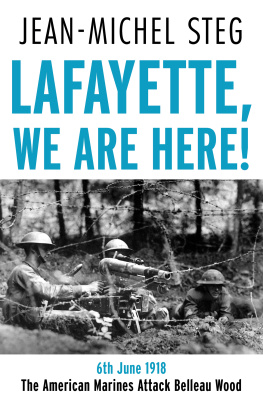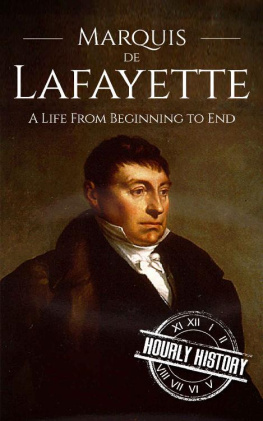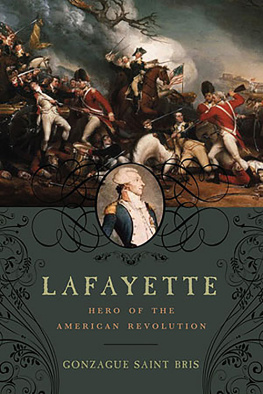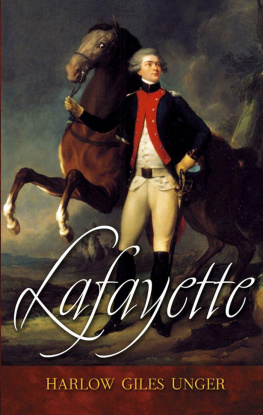
IMAGES
of Modern America
LAFAYETTE

This Welcome to Lafayette sign is located on Indiana State Road 38, an exit from Interstate 65. The sign reads, Purpose, Progress, Pride, which is now the motto of the city. Behind the sign is the Subaru of Indiana, Inc., plant. In the opposite direction is the town of Dayton. (Photograph by the author.)
ON THE FRONT COVER: Clockwise from the top left: Tippecanoe County Courthouse (photograph by Bob Williams, see ).
ON THE BACK COVER: From left to right: Clyde Beatty and the Cole Brothers Circus (photograph by Bob Williams, see ).
IMAGES
of Modern America
LAFAYETTE
W.C. Madden with the
Tippecanoe County Historical Association

Copyright 2015 by W.C. Madden with the Tippecanoe County Historical Association
ISBN 978-1-4671-1460-8
Ebook ISBN 9781439652756
Published by Arcadia Publishing
Charleston, South Carolina
Library of Congress Control Number: 2015935746
For all general information, please contact Arcadia Publishing:
Telephone 843-853-2070
Fax 843-853-0044
E-mail
For customer service and orders:
Toll-Free 1-888-313-2665
Visit us on the Internet at www.arcadiapublishing.com
I would like to dedicate this book to my father, Francis M. Madden. After I started writing books, he once told me, Your books will live on once youve passed on.
CONTENTS
ACKNOWLEDGMENTS
I have to admit this is one of the hardest books I have had to put together in a long time because of the difficulties I had in finding images; however, I owe a lot of thanks to Bob Williams, who combed through his old slides to find me some great images from days gone by. He also loaned me some slides from his former boss, Herman Berry, the former owner of Berrys Photo Shop.
Many city officials were contacted for some images. The volunteers at the Five Points Fire Museum, including Tom Sperback and Van Sherry, were the first to help with fires from all decades. Kara Bishop, communications director, helped direct me on the right course. Claudine Laufman provided some park and pool photographs for the book. Dana Rhodes, the Columbian Zoo director, found some great images for me to use of the Columbian Park Zoo. Maj. H. Allen Skinner of the 138th Military History Detachment, commander of the Indiana National Guard, provided me with some history of the guard unit in Lafayette. Kerry J. Smith, the superintendent of the Lafayette Water Works, provided me some information about the water towers in the city. Patrick Ringwald, interim manager, sent me some photographs of MatchBOX, which saved me a trip. Jennifer Rhorer of Subaru provided me three photographs of Subaru for the book in one days timethat was the quickest service I received. Also quick to respond was Leslie Pennell at the city engineers office with a map of Lafayette and the people at St. Elizabeths Hospital.
My wife, Janice, helped me by doing some things I just did not have time for as the deadline quickly approached, and I was working frantically to meet it.
INTRODUCTION
Lafayettes French heritage began before it was named for a French general. In the early 1700s, French fur traders came to the area. These traders established a settlement on the Wabash called Ouiatenon, and France claimed the area and called it New France.
Then, in 1824, William Digby purchased some land on the banks of the Wabash. He hired a surveyor, who platted his holdings. When the plat was completed in May 1825, Digby named the village Lafayette, after the French general Marquis de Lafayette, who helped America achieve its freedom from England. A year later, Tippecanoe County was created, and Lafayette became the county seat. This assured the city would grow immediately, as the county government built a courthouse to conduct business.
The town became known as a river city since most transportation to and from it was by water. The population increased until it became a city in 1853.
Fast-forward to the 1950s, and the citys population had reached around 40,000. During the 1960s, retailers began moving their stores from downtown Lafayette to shopping centers on the outskirts of the city. As a result, Lafayette formed a redevelopment commission to tackle the problem. Bank One built a skyscraper downtown in 1970. One of the best improvements that the city made came in the 1990s when the railroad downtown was moved to allow for better traffic flow.
Meanwhile, retailers, automotive dealers, restaurants, and other types of businesses opened up around the successful Tippecanoe Mall. Then, in the 1990s, large box stores opened up on Indiana State Road 26 and Creasy Lane. The Historic Preservation Commission was established in 1993 to create and promote five historic districts in Lafayette: downtown, Ninth Street, South Sixth Street, South Third Street, and Upper Main Local. This assured that Lafayette would retain its historic look downtown. An arts and market district was created there as well, with several galleries and restaurants.
The future looks bright for retail business in Lafayette, as some businesses have already announced they are either expanding or opening up more stores. For example, Dunkin Donuts announced in early 2015 that it is coming to Lafayette in 2016 with some stores; the chain currently has 30 in Indiana.
The population of the city remained flat from the 1960s to the 1990s, right around 40,000 people. The sleepy Midwest city began to awaken as it began to annex areas outside the city that were starting to grow quickly. Major industries such as Caterpillar, Wabash National, and Subaru settled in Lafayette, resulting in the growth.
Contributing to that growth is a good transportation system. Interstate 65 came in the 1970s to bring better access to the city. It runs on the perimeter of Lafayette and heads south to Indianapolis and north to Chicago. There are also some US highways and state highways that run through the city, which help add to its appeal as a transportation hub via semitrailer. Trains also run along the same routes, providing another method of shipping.
Mayor Dave Heath began annexing areas to increase the citys tax base and bring city services to the new areas. He helped the population rise to 56,397 in 2000, about a 30-percent increase in a decade.
Then, Mayor Tony Roswarski took over in 2004. He began annexing mostly vacant areas primed for development. Between the two mayors, the city grew far and wide, resulting in more room for industries and residential housing. The population has grown as a result, with more than 67,000, according to the 2010 census, about an 18-percent increase from 2000. And, in 2014, it was estimated that the population was more than 70,000 by city-data.com. Downtown also began to grow again in the new century as new high-rises went up, such as Renaissance Place. Some of buildings were for business, while others were for housing and restaurants. Geographically, the city has grown to 28 square miles in size, according to city planning.
Mayor Roswarski is happy with the new businesses in town, as they bring job creation with them. Tate & Lyle announced in 2014 that it was going to expand its two plants and bring more workers to the city. GE Aviation also announced that it was going to build a $100-million plant and hire 200 people. The year 2015 began with the announcement that GE Aviation was adding another $15-million investment to its plant, which is still under construction, and 30 more jobs. Then, the Springs, an assisted-living facility, was going to open soon and hire 120 people. The mayor was also proud to make some improvements on the issue of homelessness in the community. The city worked with 52 homeless souls in 2014, finding some of them jobs and permanent housing.
Next page










